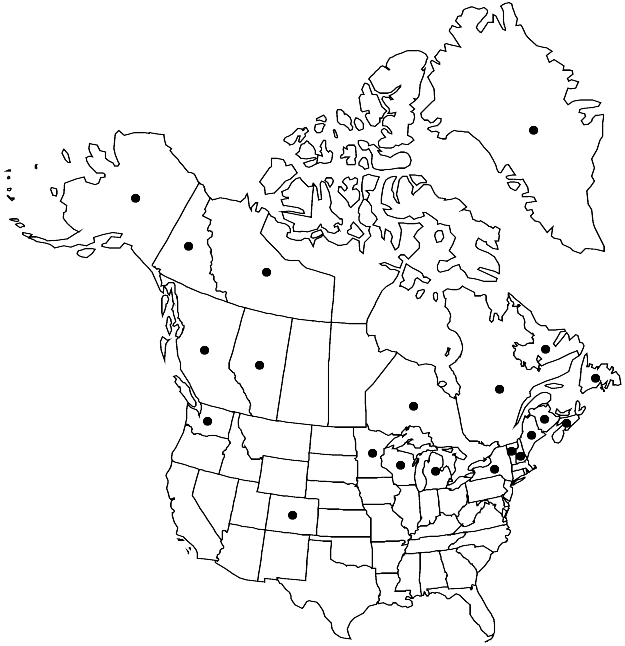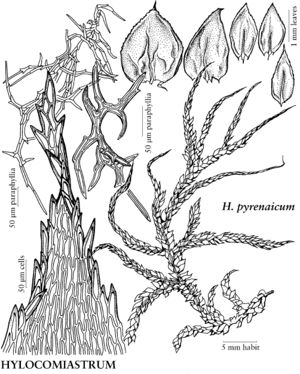Hylocomiastrum pyrenaicum
in H. G. A. Engler et al., Nat. Pflanzenfam. ed. 2, 11: 487. 1925.
Plants to 12 cm, soft. Stems 1–3 mm wide across leafy stem, irregularly branched to loosely 1-pinnate, not frondose or bushy, branches turgid, innovations inconspicuous. Stem-leaves erect to erect-spreading, loosely imbricate, becoming more tightly imbricate toward stem apices, ovate to elliptic-ovate, somewhat concave, 1.5–2.5 × 1–1.4 mm; margins serrulate to nearly entire proximally, serrate distally; apex abruptly narrowed; costa single; medial laminal cells 30–60 × 5–7 µm. Branch leaves imbricate, ovatelanceolate to lanceolate, 1.3–2 × 0.4–0.9 mm; costa single. Seta 1–3 cm. Capsule ovoid, 1.3–1.8 mm.
Habitat: Soil, humus, old logs, rock in moist forests, rarely fens, and tundra, often along streams or beside waterfalls
Elevation: low to high elevations (0-3000 m)
Distribution

Greenland, Alta., B.C., N.B., Nfld. and Labr., N.W.T., N.S., Ont., Que., Yukon, Alaska, Colo., Maine, Mich., Minn., N.H., N.Y., Vt., Wash., Wis., Eurasia
Discussion
Hylocomiastrum pyrenaicum may be more common in calcareous regions.
Selected References
None.
Lower Taxa
"nearly" is not a number. "single" is not a number."broad" is not a number.
